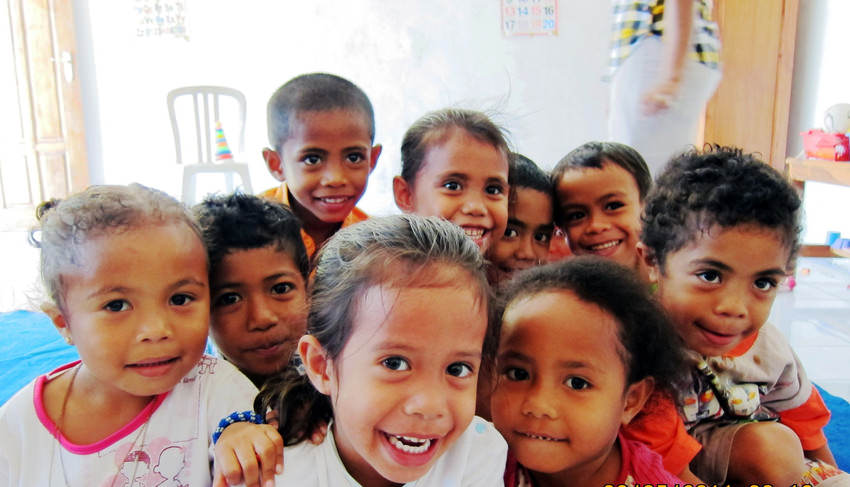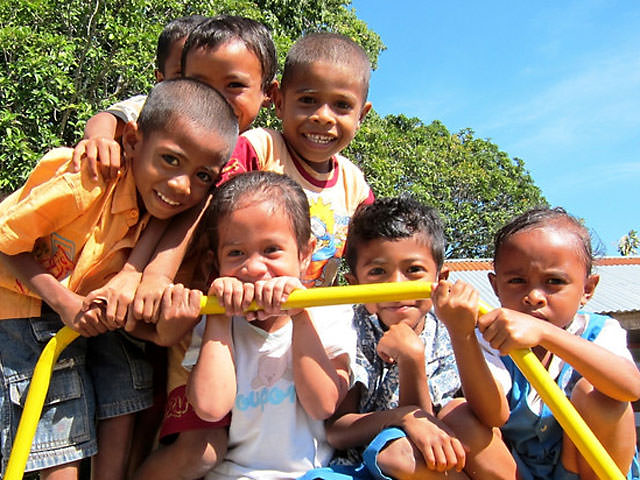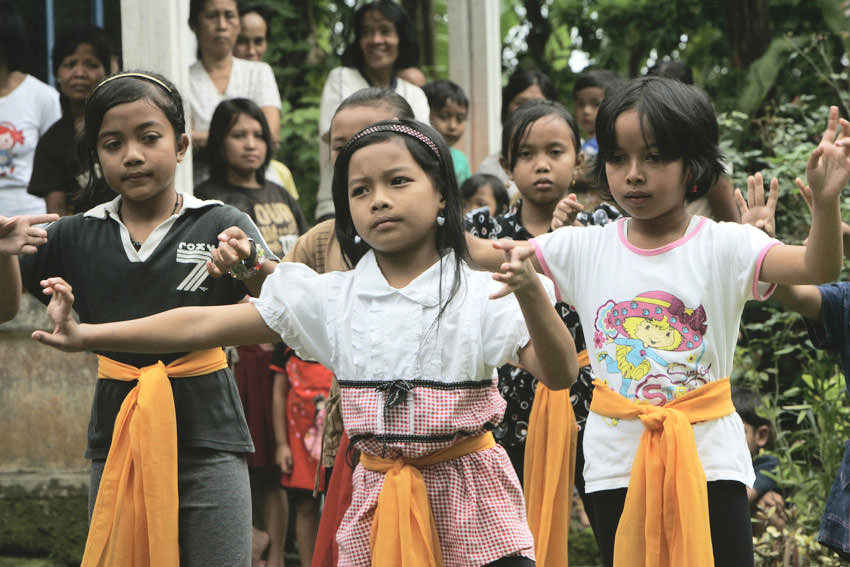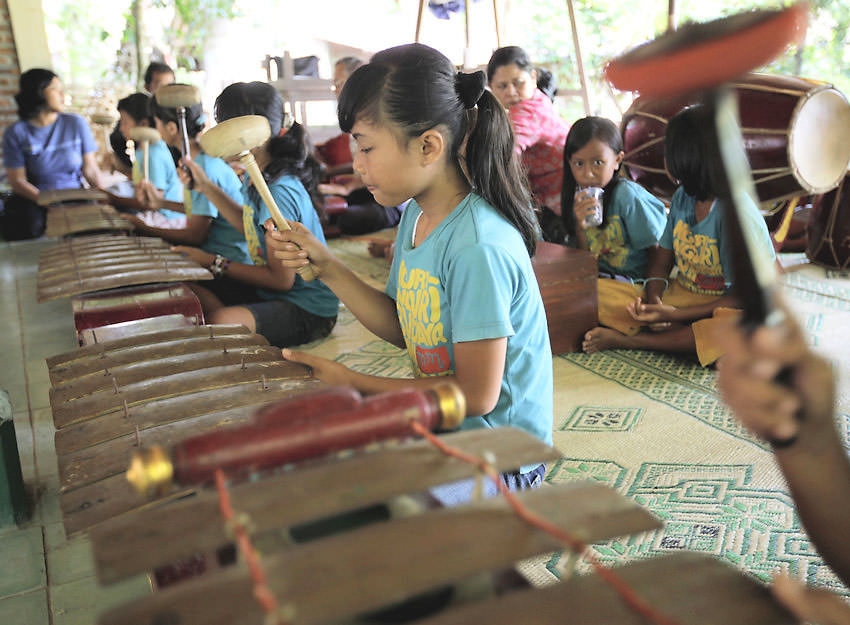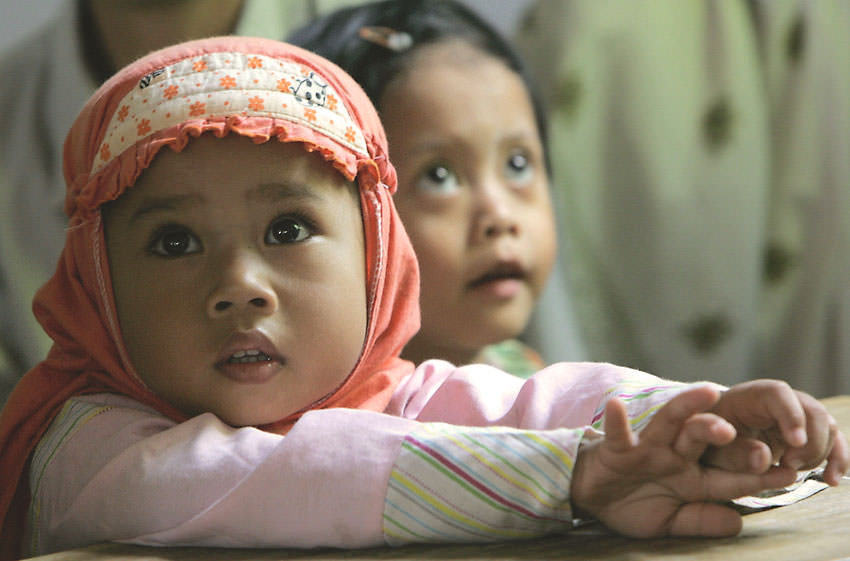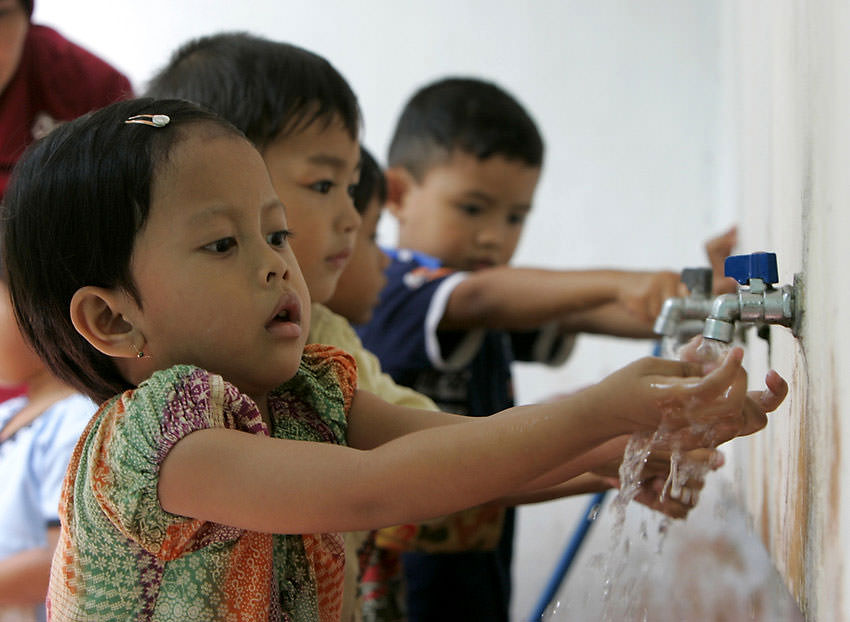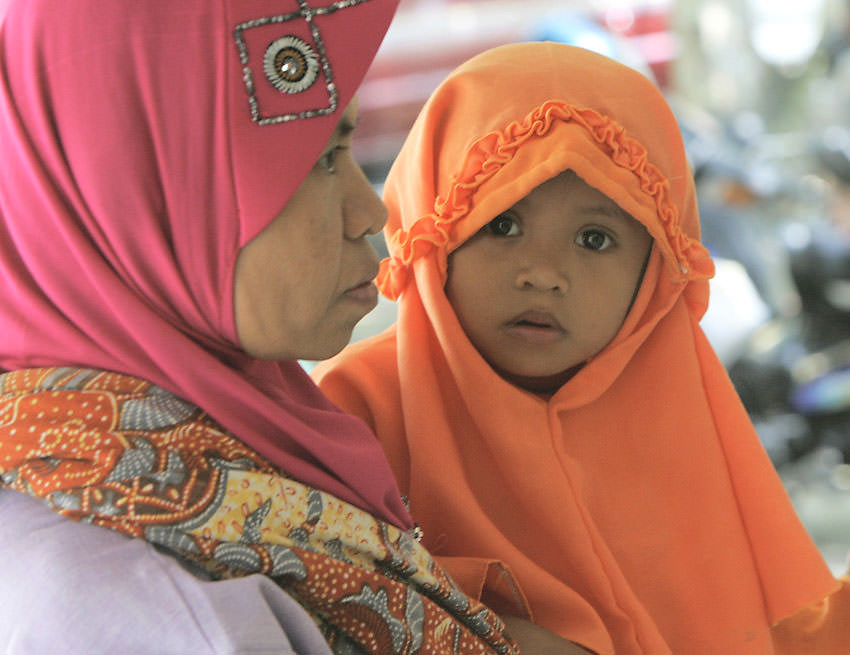
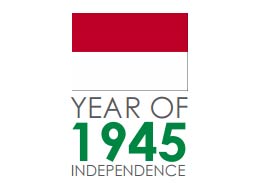
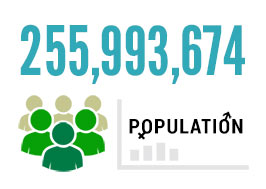
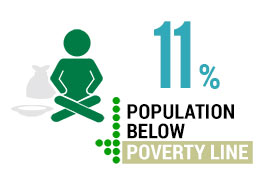
Located in Southeast Asia between the Indian and Pacific oceans, the Republic of Indonesia is the world's third most populous democracy and the largest Muslim-majority nation. It is made up of thousands of islands and dozens of active volcanoes, and Indonesia is particularly vulnerable to natural disasters, which have a disproportionately negative impact on poor and marginalized communities. Some communities are still trying to recover from the December 2004 tsunami, which killed more than 100,000 people just in Indonesia. During the past decade, ChildFund has expanded its work to train people in vulnerable communities how to reduce their risk during disasters and, in broader ways, be prepared to provide safe places for children in the immediate aftermath of storms and other crises.
ChildFund has served children in Indonesia since 1958. Help make a difference and sponsor a child in Indonesia today.
Ages 0 – 5: Healthy and Secure
ChildFund Indonesia takes a holistic approach to help children ages 5 and under develop the physical, social, emotional and intellectual skills that will allow them to succeed in school and as adults. We support programs that train parents in best child-raising practices, provide access to good healthcare, and give children opportunities for early stimulation and safe spaces. We started the Family Playgroup project to show parents how to nurture and stimulate their infants by introducing free play, singing, storytelling, arts and crafts, and other ways to help the youngest children grow and develop to their potential. ChildFund Indonesia also created a training module and video so families in remote villages also can learn and benefit from the project.
Ages 6 – 14: Educated and Confident
ChildFund aims to help children gain access to high-quality education in Indonesia. By working with parents, teachers, principals and other community members, we have spread the Child-Friendly School model in several communities. This model promotes safe, clean and healthy schools where children participate actively in the classroom, and everyone’s rights are respected and protected. Adults receive training on how to manage schools properly, and parent-teacher committees keep families informed and involved in their children’s educations. In 30 schools, children take part in Aflatoun clubs, which teach social, civic and financial skills appropriate to the children’s ages and levels of development. Other programs teach children about good hygiene, reading comprehension, math skills and more.
Ages 15 – 24: Skilled and Involved
ChildFund and our local partners in Indonesia give youth the opportunity to build leadership and communication skills while becoming important voices in their communities. In the district of Kupang, we held a youth forum specifically designed to train young men and women in managing youth clubs at home. In 2015, ChildFund focused on preventing trafficking of young women by establishing career guidance centers in central Java. The centers’ staff members provide interview preparation sessions, job application advice, computers and internet access for youth seeking jobs, particularly young women who want to find meaningful and non-exploitative employment. In other places, young women are learning how to make their own clothes for a professional environment. ChildFund Indonesia is currently working with corporate partner Intel International to train youth in basic computer skills, too.
Natural Disasters in Indonesia
Natural disasters occur frequently around the world, but they often have the most lasting effect on developing countries. Storms and earthquakes break down existing infrastructure like roads and bridges, water and sanitation systems, phone and power lines, hospitals, schools and other necessities. In the aftermath, communities have little funding to rebuild. In some countries, including Indonesia, the next typhoon or tsunami may strike before its population can regroup from the previous disaster.
ChildFund works with communities, families and children in the wake of natural disasters, building Child-Centered Spaces, which provide children safe and supportive environments and the care they need while their parents and caregivers gather clean water, building materials and food. After disasters, children are particularly vulnerable to waterborne diseases, malaria, injuries and exploitation. Child-Centered Spaces give children a place to play, study, talk about their experiences and, above all, stay safe from harm.
Indonesia has a particularly difficult history with natural disasters, including the December 2004 tsunami caused by a massive earthquake in the Indian Ocean. An estimated 167,799 people were killed in Indonesia, mainly in Aceh Province, and half a million houses were destroyed. In Indonesia, India and Sri Lanka, ChildFund responded by opening Child-Centered Spaces, distributing supplies and helping communities organize for survival and recovery. We also have trained thousands of teens, young adults and children in disaster risk reduction activities, as well as what they can do to help stay safe during an emergency.
In the wake of a natural disaster, our goal is to ensure the health and well-being of children in the area and help them cope with the psychosocial effects of having lived through a frightening experience.

